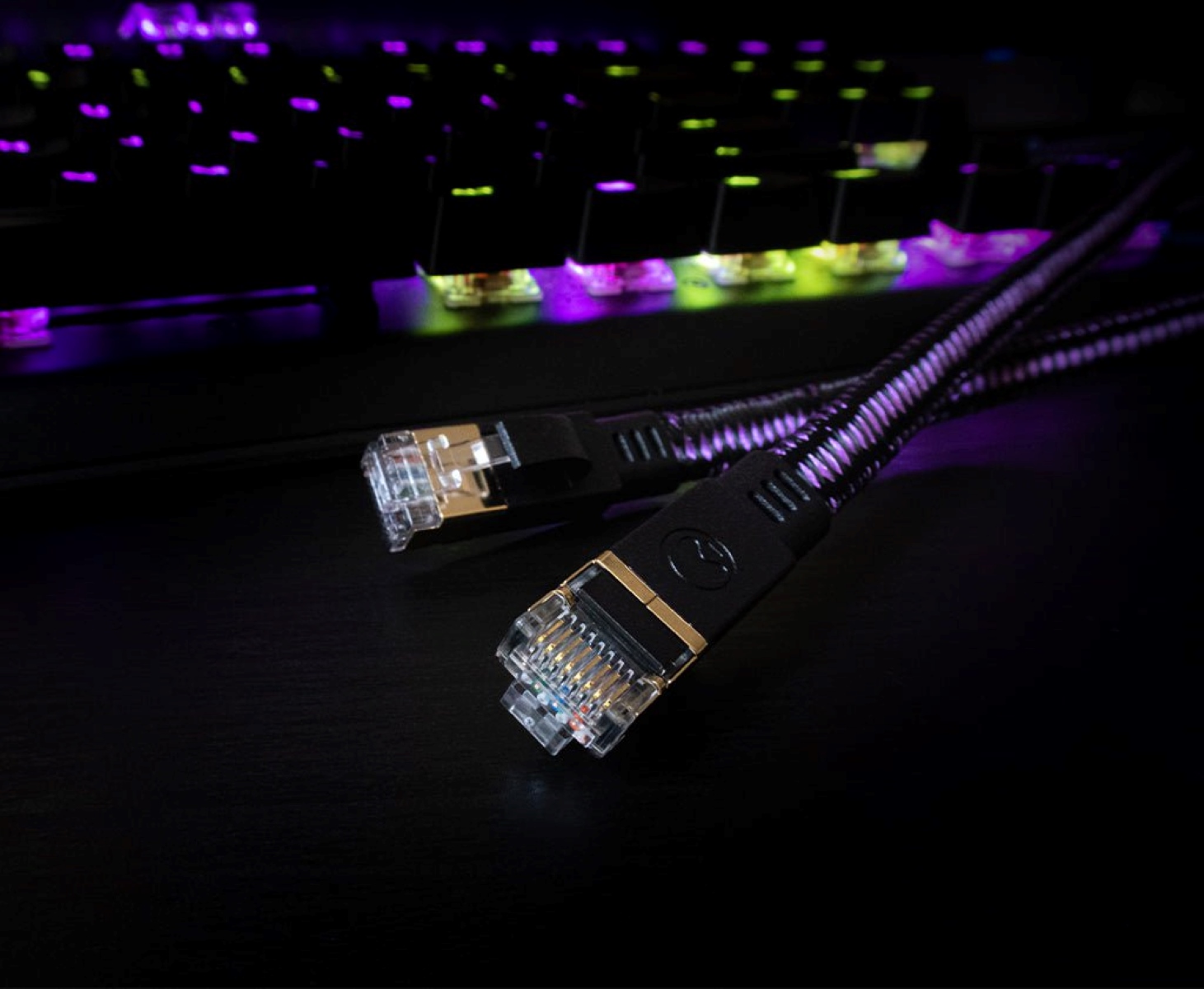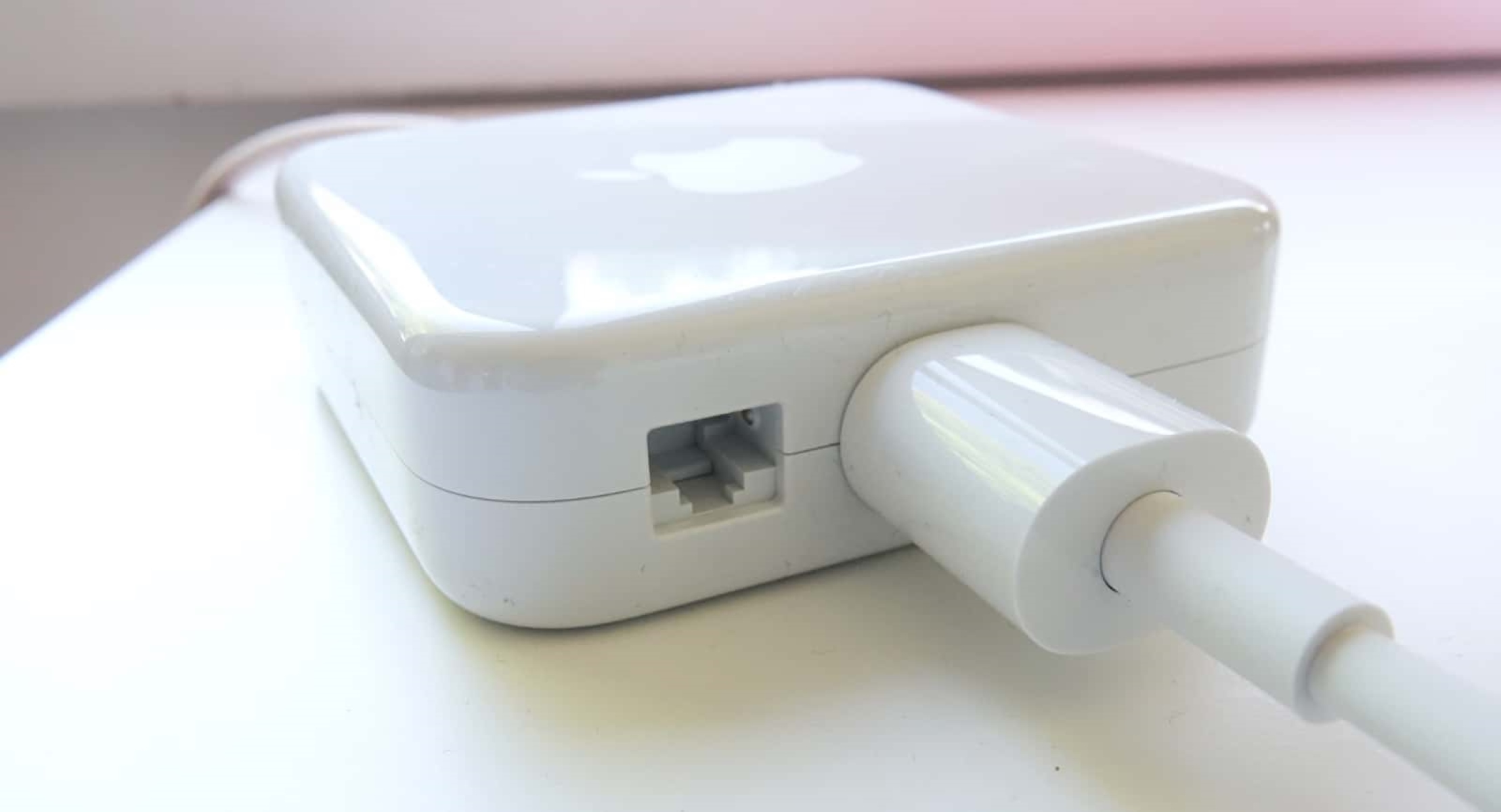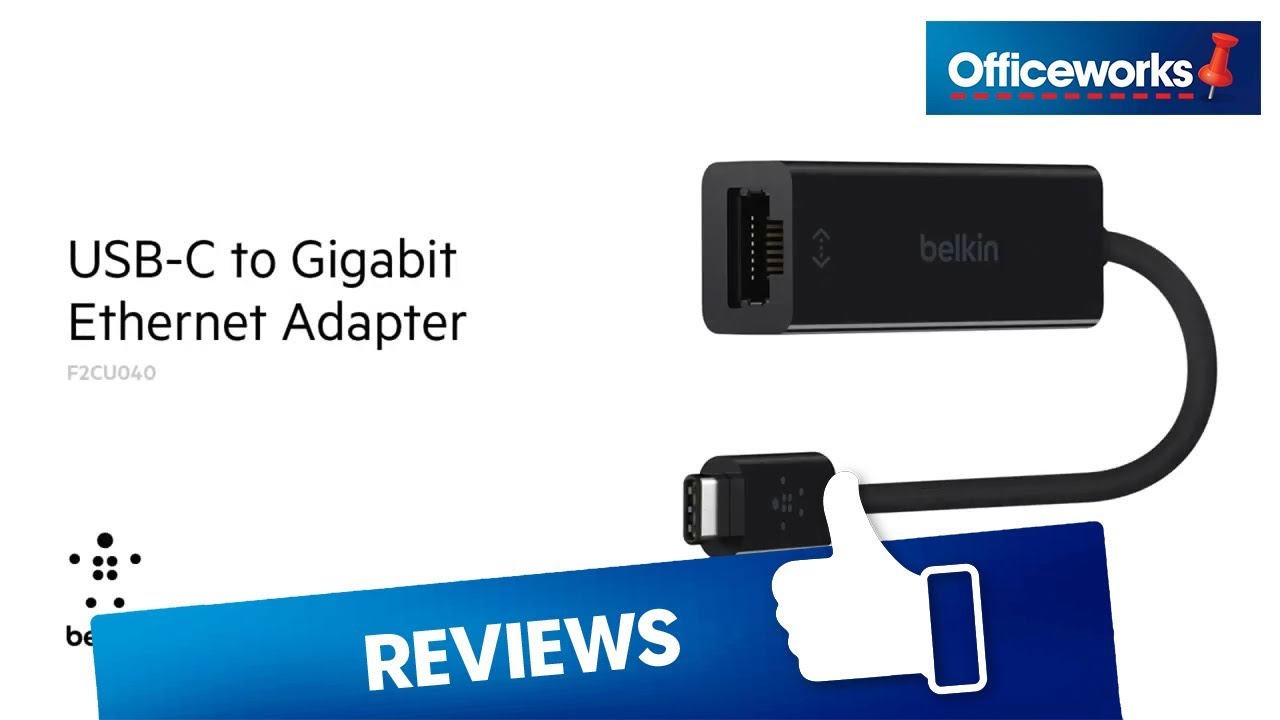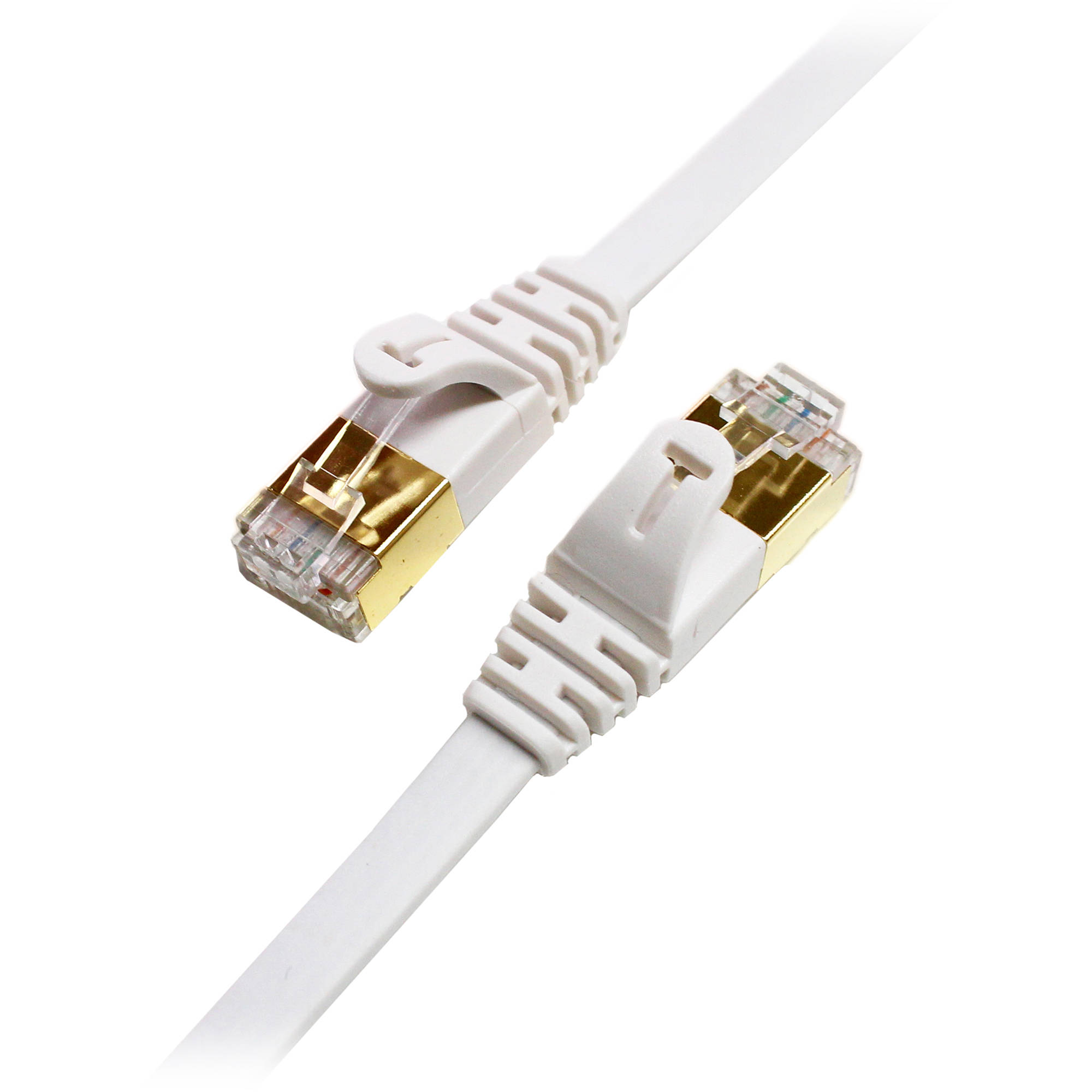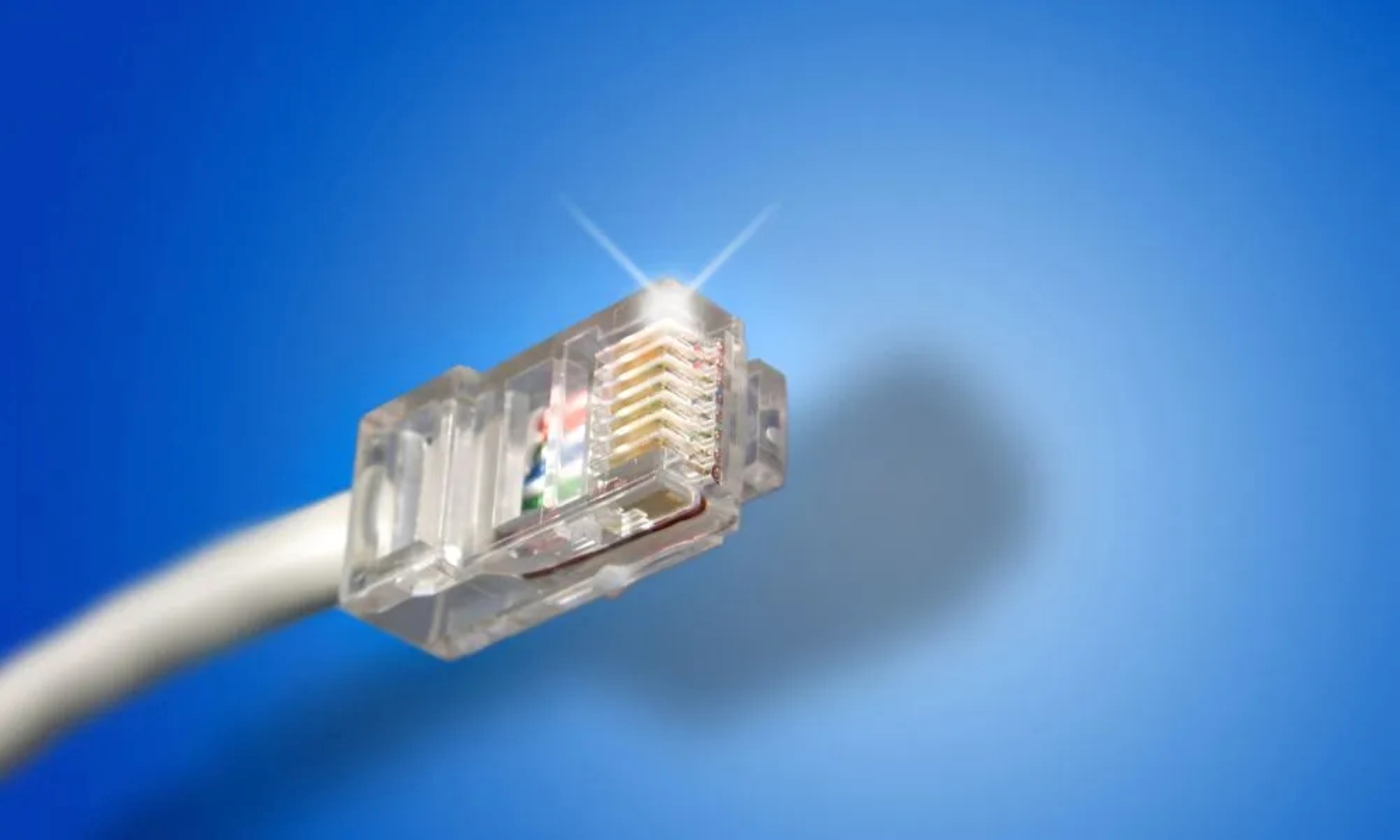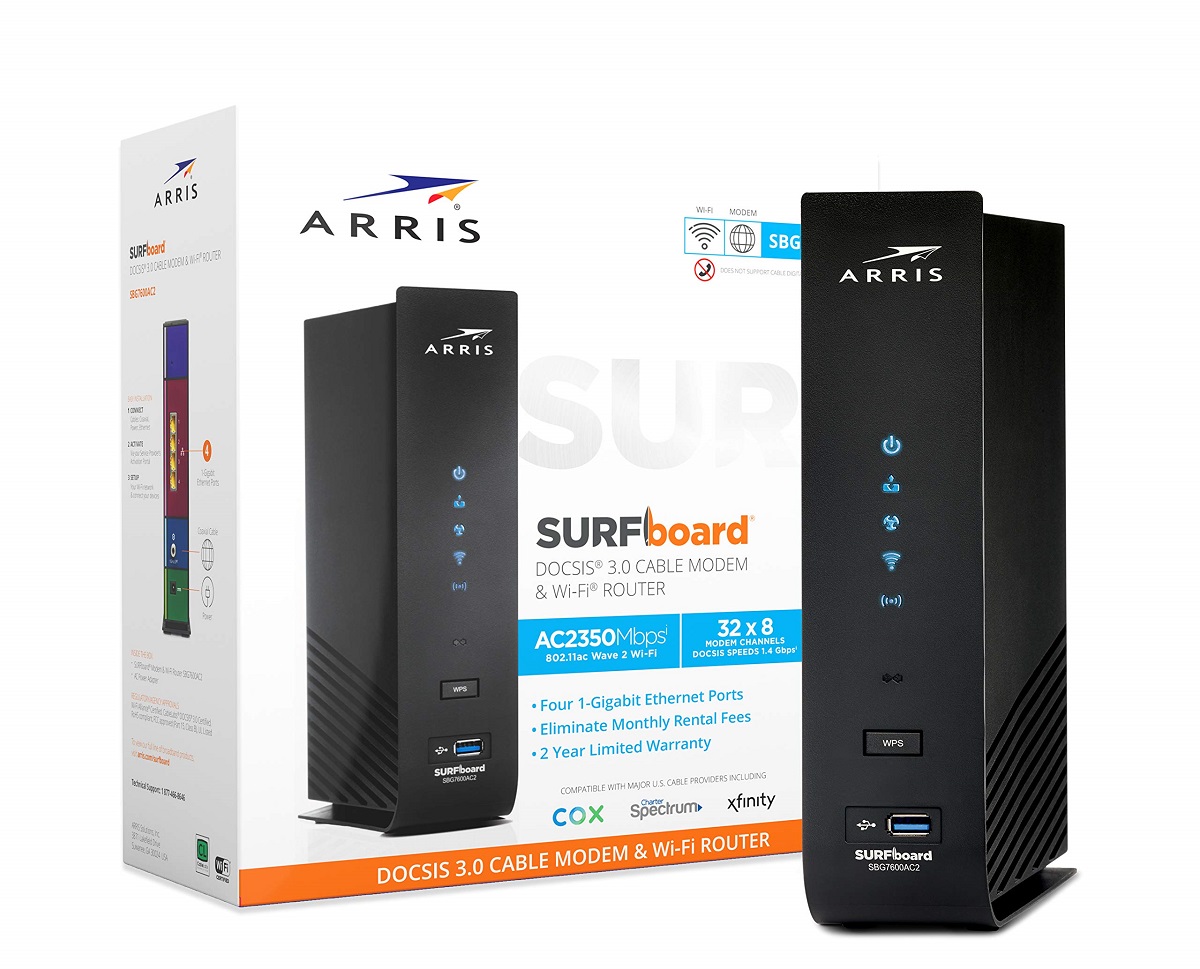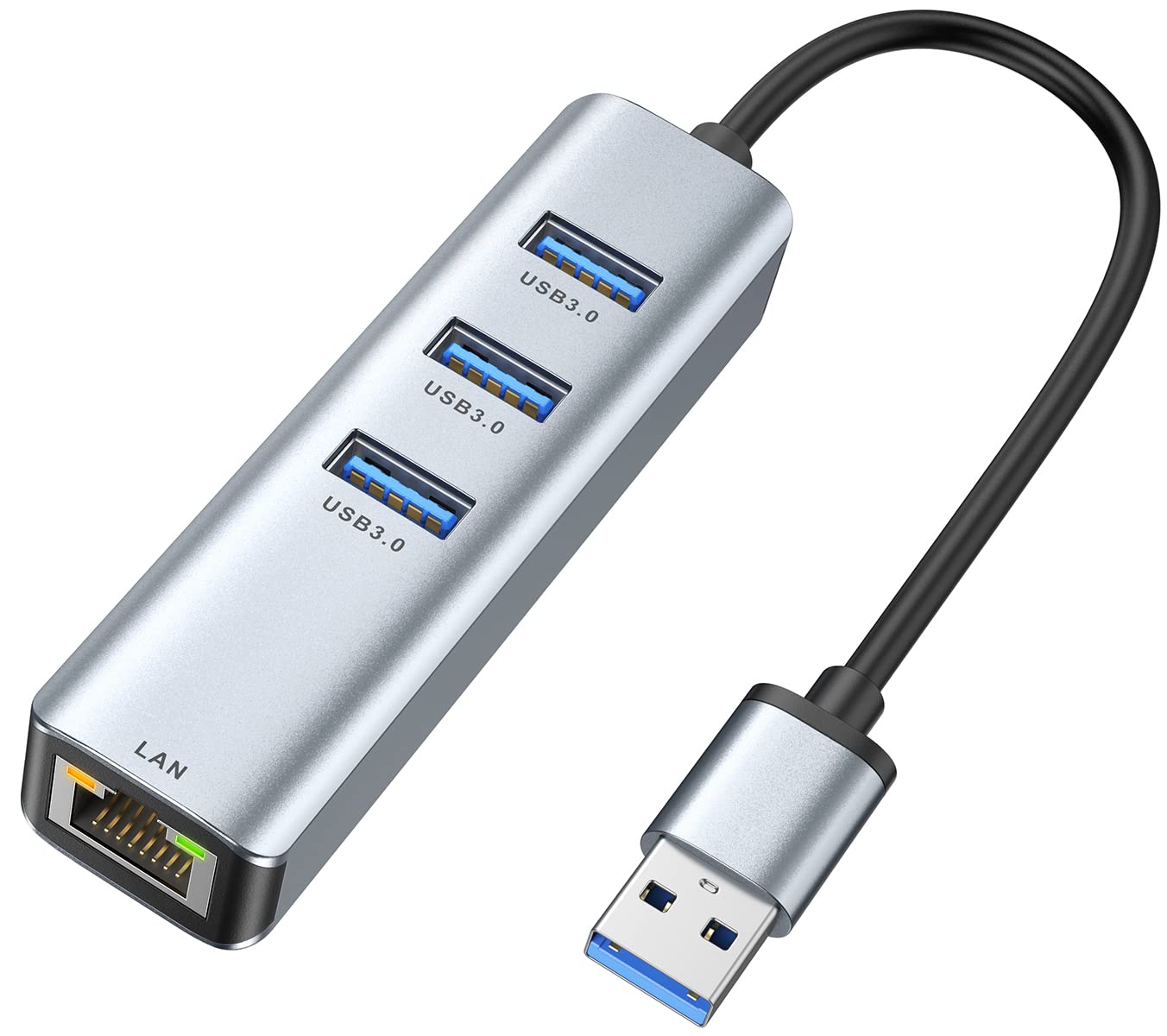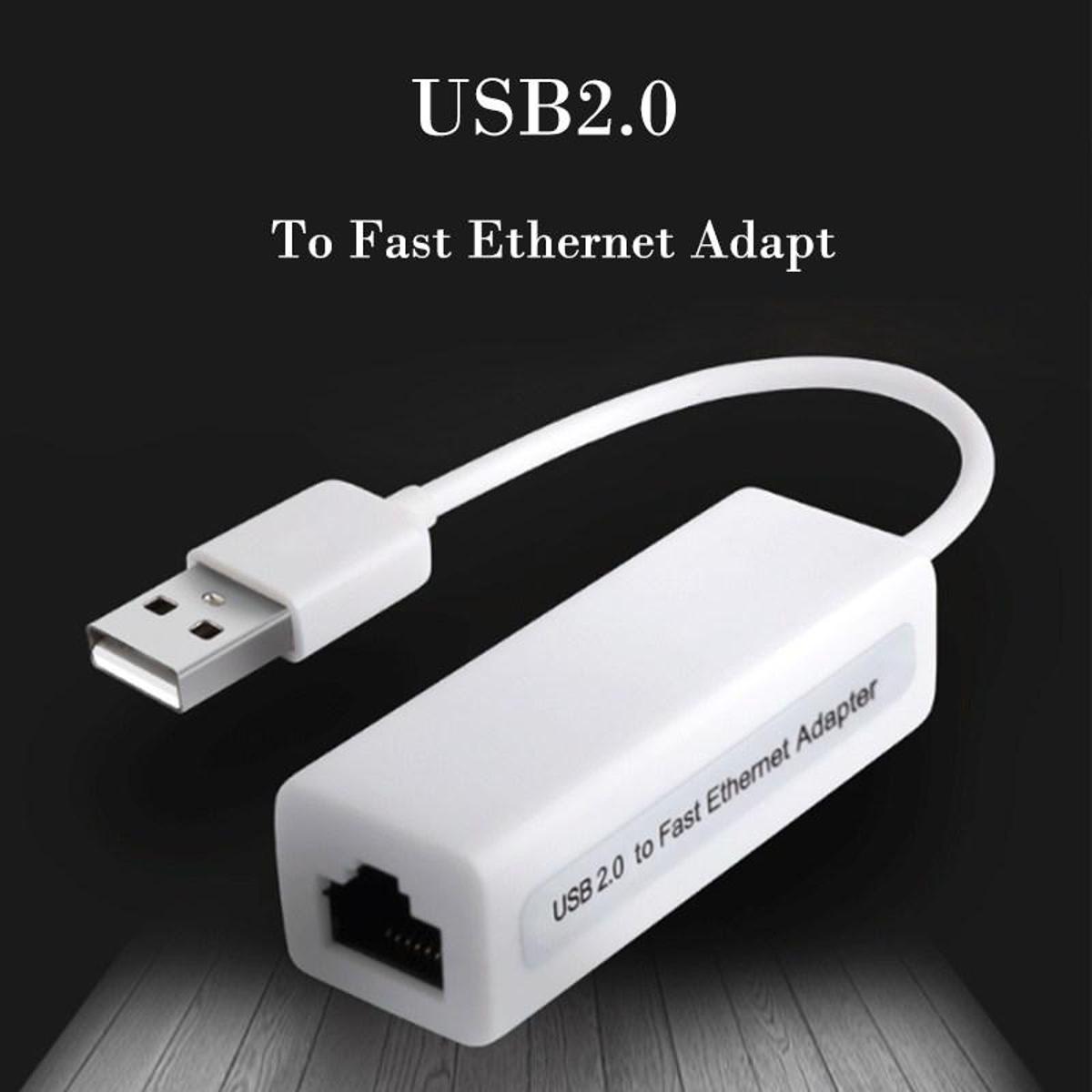Introduction
Welcome to the world of high-speed internet connections! As technology continues to advance, it’s crucial to have the right equipment to ensure a seamless and fast online experience. When it comes to achieving gigabit speeds, having the appropriate Ethernet cable is paramount. In this article, we will explore the various types of Ethernet cables available and help you determine which one is best suited for your gigabit Ethernet needs.
Gigabit Ethernet refers to a network standard that allows for data transmission speeds of up to 1,000 megabits per second (Mbps). This significant improvement over previous Ethernet standards makes it perfect for handling bandwidth-intensive tasks such as online gaming, video streaming, and large file transfers. However, to take full advantage of this high-speed network, you need to ensure your Ethernet cable can support gigabit speeds.
There are several different types of Ethernet cables on the market, each with varying levels of performance and capabilities. The most commonly used Ethernet cables for gigabit speeds are Cat5e, Cat6, Cat6a, and Cat7. Each of these cables differs in terms of construction, bandwidth capacity, and maximum transmission distance. Understanding the differences between them is essential to make an informed decision.
In the following sections, we will dive deeper into each type of Ethernet cable, discussing its features, advantages, and limitations. We will also provide insights into which cable is most suitable for gigabit speeds based on your specific requirements. Additionally, we will outline some key factors to consider when choosing an Ethernet cable, ensuring you make the best decision for your networking needs.
Understanding Gigabit Ethernet
Gigabit Ethernet is a network standard that allows for data transmission speeds of up to 1,000 megabits per second (Mbps). It is a significant improvement over previous Ethernet standards and offers faster and more reliable network performance. This enhanced speed is ideal for bandwidth-intensive activities such as online gaming, video streaming, and large file transfers.
One of the key benefits of gigabit Ethernet is its ability to handle large amounts of data simultaneously. This allows for faster and more efficient communication between devices on the network, resulting in smoother and more responsive internet connectivity. Whether you’re a gamer looking for minimal latency or a business professional needing to transfer large files quickly, gigabit Ethernet provides the necessary speeds to meet your requirements.
Gigabit Ethernet operates using a full-duplex mode, which means it can transmit and receive data simultaneously. This effectively doubles the network bandwidth and reduces the chances of data collisions, resulting in improved overall network performance. It also employs advanced error detection and correction mechanisms, ensuring reliable data transmission and minimizing the risk of data loss or corruption.
It’s important to note that achieving gigabit speeds depends not only on your network infrastructure but also on the devices you are using. All components in the network chain, including routers, switches, network adapters, and cables, must support gigabit Ethernet to achieve the desired speeds. In this article, we will focus on the role of Ethernet cables in supporting gigabit speeds and which type of cable is most suitable for your needs.
Now that we have a better understanding of gigabit Ethernet and its capabilities, let’s delve into the different types of Ethernet cables that can support these high-speed connections.
Different Types of Ethernet Cables
When it comes to gigabit Ethernet, there are several types of Ethernet cables available, each with different capabilities and specifications. The most commonly used cables for gigabit speeds are Cat5e, Cat6, Cat6a, and Cat7. Let’s take a closer look at each of these Ethernet cables:
Cat5e Ethernet Cable
Cat5e, or Category 5e, is an enhanced version of the original Cat5 Ethernet cable. It is capable of supporting gigabit speeds up to 1000 Mbps. Cat5e cables are relatively affordable and widely available, making them a popular choice for residential and small business networks. However, they have a maximum recommended transmission distance of 100 meters, which may limit their use in larger network setups.
Cat6 Ethernet Cable
Cat6, or Category 6, Ethernet cables are an improvement over Cat5e cables. They offer higher bandwidth capacity and better noise resistance, making them capable of handling gigabit speeds up to 1000 Mbps with reduced signal interference. Cat6 cables are suitable for both home and commercial installations and have a maximum recommended transmission distance of 55 meters for gigabit speeds.
Cat6a Ethernet Cable
Cat6a, or Category 6a, Ethernet cables are the next step in Ethernet cable evolution. They provide even higher bandwidth capacity and improved performance compared to Cat6 cables. Cat6a cables are capable of supporting 10-gigabit Ethernet speeds up to 10,000 Mbps over short distances, making them an excellent choice for professional installations. However, they are thicker and less flexible than Cat5e and Cat6 cables, which may affect their use in certain scenarios.
Cat7 Ethernet Cable
Cat7, or Category 7, Ethernet cables are the most advanced Ethernet cables available. They offer superior shielding and improved performance over long distances. Cat7 cables are capable of supporting 10-gigabit Ethernet speeds up to 10,000 Mbps over a maximum recommended distance of 100 meters. While Cat7 cables are more expensive than other options, they provide excellent speed and reliability, making them suitable for high-demand applications such as data centers and professional network setups.
Each of these Ethernet cables has its advantages and limitations, so it’s vital to choose the one that best fits your specific requirements. In the next section, we will explore which Ethernet cable is most suitable for achieving gigabit speeds.
Cat5e Ethernet Cable
Cat5e, or Category 5e, Ethernet cables are an improved version of the original Cat5 Ethernet cables. They are widely used and readily available, making them a popular choice for both residential and small business networks.
Cat5e cables are capable of supporting gigabit Ethernet speeds up to 1000 Mbps, making them suitable for most home internet connections. They offer better performance and reduced signal interference compared to Cat5 cables, thanks to enhanced twists and tighter specifications. Additionally, Cat5e cables are backward compatible with older Ethernet standards, ensuring compatibility with a wide range of devices.
These cables are affordable and easy to install, often coming in various lengths to suit different networking needs. They are typically unshielded and constructed with four pairs of twisted copper wires. However, their maximum recommended transmission distance is 100 meters, which may be a limitation for larger network setups. Beyond this distance, signal degradation may occur, affecting data transmission speeds and reliability.
Cat5e cables are commonly used in residences and small office environments where shorter cable runs are sufficient to connect devices. They are ideal for basic internet usage, such as browsing the web, sending emails, and streaming video. However, if you require higher data transfer rates or plan to expand your network in the future, you may want to consider upgrading to a higher category cable.
Overall, Cat5e Ethernet cables offer a cost-effective solution for achieving gigabit speeds in home and small office setups. They provide reliable performance and backward compatibility, making them a versatile choice for most networking needs.
Cat6 Ethernet Cable
Cat6, or Category 6, Ethernet cables are an upgrade over Cat5e cables, offering higher performance and improved data transmission speeds. They are designed to handle gigabit Ethernet speeds up to 1000 Mbps, making them suitable for a wide range of networking applications.
Compared to Cat5e cables, Cat6 cables feature tighter twists and better insulation, which reduce crosstalk and signal interference. This results in improved data integrity and more reliable network connections. Cat6 cables also have a higher bandwidth capacity, allowing for faster data transfer rates and better performance in high-demand scenarios.
One of the key advantages of Cat6 cables is their ability to support longer cable runs without signal degradation. They have a maximum recommended transmission distance of 55 meters for gigabit speeds, which makes them suitable for both residential and commercial installations. This increased distance capability provides greater flexibility when setting up your network, allowing for more efficient cable routing.
Additionally, Cat6 cables are backward compatible with older Ethernet standards, ensuring compatibility with existing devices. This makes them a suitable choice for upgrading existing networks to support gigabit speeds without the need for extensive infrastructure changes.
When it comes to installation, Cat6 cables are similar in construction to Cat5e cables, consisting of four pairs of twisted copper wires. However, they often have better shielding to further reduce crosstalk and external interference. The shielding also makes them more resistant to electromagnetic interference (EMI), making Cat6 cables ideal for environments with higher levels of noise or electrical interference.
Overall, Cat6 Ethernet cables are a significant step up from Cat5e cables in terms of performance and capabilities. They are well-suited for applications that require higher data transfer rates, such as video streaming, online gaming, and multimedia content creation. If you want to future-proof your network and ensure optimal performance, Cat6 cables are an excellent choice.
Cat6a Ethernet Cable
Cat6a, or Category 6a, Ethernet cables are an advancement over Cat6 cables, offering even higher performance and capabilities. They are designed to support 10-gigabit Ethernet speeds up to 10,000 Mbps, making them ideal for professional network installations and demanding applications.
One of the key features of Cat6a cables is their enhanced bandwidth capacity. They can handle higher data transfer rates over longer distances compared to Cat6 cables. With a maximum recommended transmission distance of 100 meters, Cat6a cables provide the flexibility to set up networks in larger spaces without sacrificing speed or reliability.
In terms of construction, Cat6a cables are similar to Cat6 cables, consisting of four pairs of twisted copper wires encased in a protective jacket. However, Cat6a cables are slightly thicker and bulkier due to additional insulation and shielding. This enhanced shielding provides better protection against crosstalk and external interference, ensuring minimal signal degradation and improved overall performance.
Due to their higher specifications and capabilities, Cat6a cables are often used in professional settings such as data centers, office buildings, and other high-demand environments. They are well-suited for applications that require large file transfers, real-time video streaming, and other bandwidth-intensive tasks.
It’s important to note that Cat6a cables are backward compatible with lower Ethernet standards, including Cat5e and Cat6. This means they can be used in place of older cables without requiring significant infrastructure changes. However, to take full advantage of the 10-gigabit speeds that Cat6a cables offer, it’s essential to have other network components, such as routers and switches, that also support 10-gigabit Ethernet.
While Cat6a cables offer superior performance, they do come at a higher cost compared to Cat6 and Cat5e cables. Additionally, their increased thickness and rigidity may make them more challenging to install in tight spaces or in situations that require flexibility. However, if you require the highest data transfer speeds and want to future-proof your network for upcoming technologies, Cat6a cables are an excellent investment.
Cat7 Ethernet Cable
Cat7, or Category 7, Ethernet cables are the most advanced and highest-performing Ethernet cables available on the market. They are designed to support 10-gigabit Ethernet speeds up to 10,000 Mbps, making them perfect for demanding applications and high-performance networks.
One of the standout features of Cat7 cables is their superior shielding. They come with individually shielded pairs, as well as an overall shielding layer, which provides excellent protection against crosstalk and external interference. This shielding ensures optimal signal integrity and minimizes signal loss, resulting in reliable and high-speed data transmission.
With a maximum recommended transmission distance of 100 meters, Cat7 cables offer the same reach as other Ethernet cable types. However, their superior shielding helps maintain signal quality over longer distances, making them a robust choice for large-scale network installations.
In terms of construction, Cat7 cables are thicker and stiffer compared to previous Ethernet cable types. They typically consist of four individually shielded twisted pairs, as well as an overall shielding layer. Additionally, Cat7 cables feature specialized connectors, such as the GG45 or TERA connectors, which are designed to ensure maximum performance when paired with Cat7 cables.
Due to their exceptional performance and capabilities, Cat7 cables are commonly used in professional settings, such as data centers, server rooms, and high-demand network environments. They are suitable for applications that involve real-time data streaming, high-resolution video transfer, and ultra-fast file transfers.
It’s worth mentioning that while Cat7 cables offer superior performance, they are more expensive than other Ethernet cable types. Additionally, they require compatible networking devices, such as routers and switches, that also support 10-gigabit Ethernet speeds. However, if your network demands ultimate speed and reliability, and you are willing to invest in top-of-the-line infrastructure, Cat7 cables are the ultimate choice for achieving blazing-fast gigabit speeds.
Which Ethernet Cable is Suitable for Gigabit Speeds?
When it comes to choosing an Ethernet cable that is suitable for gigabit speeds, several factors come into play. The most commonly used Ethernet cables for gigabit speeds are Cat5e, Cat6, Cat6a, and Cat7. The choice of cable depends on your specific requirements and the level of performance you need.
If you are looking for a cost-effective option that supports gigabit speeds, Cat5e cables are a reliable choice. They are widely available and offer good performance for most residential and small business networks. However, they have a maximum recommended transmission distance of 100 meters, which may limit their use in larger network setups.
Cat6 cables are an upgrade over Cat5e and offer improved performance and reduced signal interference. They have a maximum recommended transmission distance of 55 meters for gigabit speeds, making them suitable for both residential and commercial installations. If you need higher data transfer rates and a longer reach, Cat6 cables are a recommended choice.
For even higher performance, Cat6a cables are the next step. They can support 10-gigabit Ethernet speeds up to 10,000 Mbps over short distances. Cat6a cables are thicker and less flexible than Cat5e and Cat6 cables due to their enhanced insulation and shielding. They are a great option for professional installations and demanding applications that require top-notch performance.
If you require the utmost transmission speed and reliability, Cat7 cables are the most advanced option. They can support 10-gigabit Ethernet speeds up to 10,000 Mbps over a maximum recommended distance of 100 meters. Cat7 cables offer superior shielding and are commonly used in data centers and high-performance network setups.
When choosing the right Ethernet cable for gigabit speeds, it’s important to consider factors such as your network setup, the required transmission distance, and the level of performance you need. Additionally, ensure that your networking devices, such as routers and switches, are also compatible with the chosen Ethernet cable standard.
Ultimately, the choice between Cat5e, Cat6, Cat6a, and Cat7 will depend on your specific needs, budget, and the level of performance you desire. It’s always recommended to consult with a networking professional or refer to manufacturer specifications to ensure you choose the most suitable Ethernet cable for achieving gigabit speeds in your network.
Factors to Consider When Choosing an Ethernet Cable for Gigabit
Choosing the right Ethernet cable for gigabit speeds involves considering several important factors. These factors will ensure that you select a cable that meets your specific requirements and provides the best performance for your network. Here are some key considerations to keep in mind:
Transmission Distance:
The transmission distance required for your network plays a crucial role in choosing the right Ethernet cable. Different cables have varying maximum recommended distances for maintaining gigabit speeds. Ensure that the cable you choose can reach the necessary distance without signal degradation.
Shielding:
Consider the level of shielding provided by the Ethernet cable. Better shielding reduces interference from external sources and improves signal quality. Shielding is particularly important in environments with high levels of electrical noise or where cables will be run alongside power lines.
Future-Proofing:
Think about your network’s future needs. If you anticipate increasing your network speed or bandwidth requirements, choosing a cable with higher capabilities, such as Cat6a or Cat7, can help future-proof your network and save you from needing to upgrade later on.
Compatibility:
Ensure that the Ethernet cable you choose is compatible with your networking devices, such as routers, switches, and network adapters. Different Ethernet cable categories have different connector types, so check compatibility to ensure proper signal transmission.
Budget:
Consider your budget when selecting an Ethernet cable. While higher category cables often provide better performance, they are also typically more expensive. Assess your needs and balance performance with cost to find the best fit for your budget.
Installation Requirements:
Consider the physical aspects of the installation. Some Ethernet cables, such as Cat6a and Cat7, are thicker and less flexible compared to others. Ensure that the cable’s physical properties align with your installation needs and can be properly routed and managed.
By considering these factors, you can make an informed decision and choose the Ethernet cable that best suits your gigabit speed requirements and network environment. It’s always recommended to consult with professionals or refer to manufacturer specifications for guidance when selecting the most appropriate cable for your specific networking needs.
Conclusion
Choosing the right Ethernet cable for gigabit speeds is crucial for ensuring a fast and reliable network connection. The four most common Ethernet cable types for gigabit speeds are Cat5e, Cat6, Cat6a, and Cat7. Each cable type offers different performance levels and features to meet specific networking needs.
If you’re looking for a cost-effective solution that supports gigabit speeds, Cat5e cables are a reliable choice. They are widely available and suitable for most residential and small business networks. However, their maximum recommended transmission distance of 100 meters may limit their use in larger setups.
Cat6 cables offer improved performance and reduced signal interference compared to Cat5e cables. They are suitable for both residential and commercial installations, and have a maximum recommended transmission distance of 55 meters for gigabit speeds.
Cat6a cables, with their enhanced insulation and shielding, can support 10-gigabit Ethernet speeds over short distances. They are commonly used in professional environments and provide optimal performance for demanding applications.
Cat7 cables are the most advanced Ethernet cables, offering superior shielding and support for 10-gigabit Ethernet speeds over a maximum recommended distance of 100 meters. They are commonly used in data centers and high-performance networks that require maximum speed and reliability.
When selecting an Ethernet cable, consider factors such as the required transmission distance, level of shielding, future-proofing needs, compatibility with networking devices, budget, and installation requirements. By carefully considering these factors, you can choose the Ethernet cable that best meets your gigabit speed requirements and provides the best performance for your network environment.
Remember to consult with networking professionals or refer to manufacturer specifications to ensure you make the right choice. With the right Ethernet cable in place, you can enjoy a seamless and high-speed internet experience for all your bandwidth-intensive activities.







